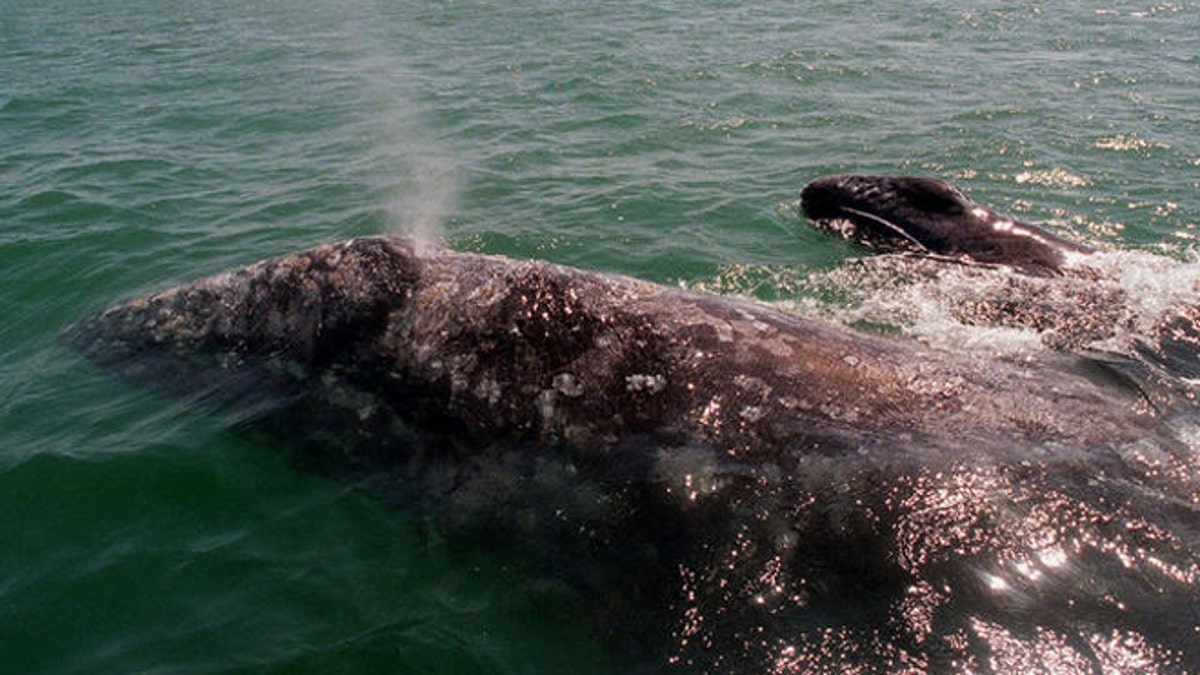
A pair of conjoined gray whales have been found floating in lagoon in the Mexican state of Baja California Sur, becoming the documented case of so-called Siamese gray whales.
The conjoined whales were found in Mexico's Laguna Ojo de Liebre, or Scammon’s Lagoon, and scientists believe that the dead calves were miscarried due to their disability. Other whale species have been known to have conjoined twins – namely fin, sei and minke – but researchers have not found any published cases of conjoined twin gray whales.
While a normal new-born gray whale normally measures between 12 to 16 feet, the carcass of the conjoined whale was only about 7-feet long. The twins were also severely underdeveloped and the birth or stillbirth might also have killed the mother, Alisa Schulman-Janiger, an American Cetacean Society researcher told the Daily Mail.
Gray whales are currently in the midst of their yearly 6,000-mile migration from their home waters up near the Arctic Circle and make stops in the waters off Mexico’s Baja California peninsula. They generally give birth during their southbound journey or in lagoons, where they nurse their calves before making the journey north to the Bering and Chukchi seas.
The Pacific gray whale population numbers about 21,000, according to the National Oceanic and Atmospheric Administration (NOAA).
Laguna Ojo de Liebre is an important habitat for the reproduction and wintering of the gray whale and harbor seal, as well as other mammals including the California sea lion, northern elephant seal and blue whale. It is also designated as a part of the Vizcaíno Biosphere Reserve UNESCO World Heritage Site.
Follow us on twitter.com/foxnewslatino
Like us at facebook.com/foxnewslatino
